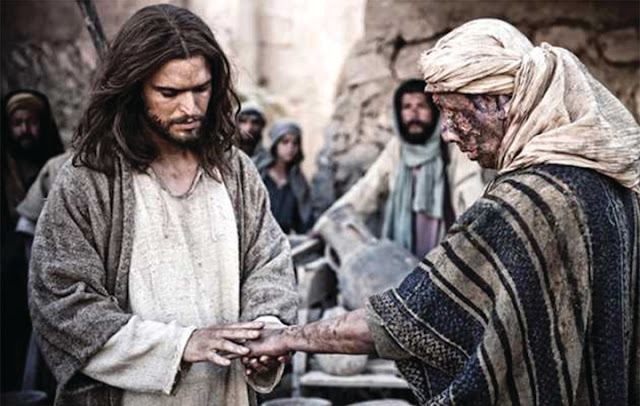A 40-DAY JOURNEY WITH THE KING: Lenten reflections from Mark’s Gospel (5)
“A leper came
to him begging him, and kneeling he said to him,
“If you
choose, you can make me clean.” Moved with pity, Jesus stretched
out his hand and touched him, and said to him,
“I do choose.
Be made clean!” Immediately the leprosy left him,
and he was made clean. (Mk. 1.40-42)
Along with
exorcisms, Jesus performs many healings of various physical ailments in the
early chapters of Mark’s Gospel. Jesus’
first healing is that of Simon’s mother-in-law (1.29-31). With the restoration of the leper, we begin
to understand the meaning of Jesus’ healings (and exorcisms). The thrice-repeated word “clean” in the above
passage reveals what is truly going on when the King restores the members of
the people of God to wholeness. Leprosy
rendered its victim “unclean”, i.e., it proscribed that person from
participation in the life of the community, of both civil society and the
worship/liturgical life of the people (cf. Lev. 13). In the Hebrew Scriptures, as well as throughout
the history of the people of God, holiness had been a question of separation,
distinction, and exclusion. Clean vs. unclean,
in vs. out, us vs. them. Holiness had
been understood as the drawing of clear lines which demarcated the frontiers
between, on the one hand, that which was worthy to exist in the presence of God,
and that which was abhorrent to Yahweh and must be banished far from his face,
on the other. Holiness was bound up with
the fear of being shunned, ostracized, of being condemned to a living hell of
solitude and shame. Holiness was
something to be achieved, something to be guarded, something to be proud of –
holiness, as understood by Jesus’ contemporaries, was social currency. Simply put, holiness = status.
The “unclean”
– the lepers (both literal and metaphorical), the sinners, the collaborators
with Rome (=tax collectors), the broken, the indebted, the destitute, the
beggars, the crippled, the blind, the deaf, those possessed by “unclean” spirits
– all these had no status, no place, were ascribed no value and were not only
unclean but also unseen. The multitudes
of hurting people whom “the holy” would rather not acknowledge flocked to
Jesus, knowing that he had the power to make them “clean”. These “unwashed masses” were the target of
Jesus’ operation of kingdom-building. The
rule of King Jesus is a rule which restores.
Jesus’ approach to wholeness/ holiness is radically different from that
of, for example, the Pharisees. Jesus “crosses
the lines” between clean and unclean with seeming recklessness, not because holiness
is unimportant, but because holiness is only possible once one has been
embraced by unconditional love. For Jesus,
holiness is a gift to be given, not a possession to be hoarded. Jesus betrays no fear of sin, uncleanliness
or contagion. Jesus “infects” the
unclean with his wholeness/holiness. As
far as Jesus is concerned, holiness = healing.
“The hands of
the king are the hands of a healer” –J.R.R. Tolkien, The Lord of the Rings




Comments
Post a Comment